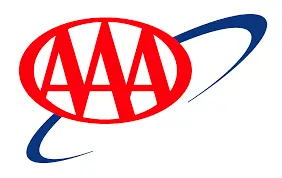
New analysis shows $719 decline in annual expenses, driven by lower depreciation and fuel prices
(PADUCAH, Ky.)-Vehicle ownership costs have dropped substantially in 2025, offering welcome relief to consumers facing economic pressures, according to AAA’s annual driving cost analysis released today.
The comprehensive study found that owning and operating a new vehicle now costs an average of $11,577 annually, or about $965 per month—a significant $719 decrease from 2024 levels.
The cost reduction stems from several key factors, including reduced vehicle depreciation, lower finance charges, decreased fuel prices, and consumers gravitating toward more affordable vehicle options, the motorist organization reported.
“While you may want to rush to the dealership for a new car when you see the drop in ownership costs this year, there are many factors to consider,” said Jim Garrity, director of public affairs for AAA East Central. “Consumers should assess their vehicle needs first, taking into consideration things like miles driven, hauling or towing needs, and most importantly, their budget.”
Depreciation Drives Savings
Depreciation—the difference between a vehicle’s purchase price and resale value—remains the largest component of ownership costs but has decreased meaningfully this year. Vehicles in the study lost an average of $4,334 in value annually, compared to $4,680 in 2024.
Finance charges also contributed to the overall decline, dropping 15% to $1,131 in 2025 from $1,332 the previous year.
Fuel costs provided additional savings, with the average cost falling to 13 cents per mile—a 12.8% decrease from last year. Regular gasoline for vehicles in the study averaged $3.15 per gallon, down from $3.54 in 2024.
Vehicle Choice Matters
The analysis underscores how vehicle selection significantly impacts long-term costs. A pickup truck, while ideal for heavy-duty work, costs an additional $6,402 annually compared to a small sedan, which operates at just 55.87 cents per mile—43.3% less than a pickup.
Electric vehicles present a mixed picture in the current market. While EVs continue to offer lower operating costs, particularly for fuel and maintenance, decreased gasoline prices and slightly higher electricity rates have narrowed their cost advantage.
Electricity for charging EVs rose slightly to 16.7 cents per kilowatt-hour, up from 15.9 cents in 2024. Although EVs still cost less than half as much to fuel compared to gas vehicles, this savings no longer fully offsets their higher ownership costs across all vehicle categories studied.
Hybrid vehicles emerged as an attractive middle ground, offering the lowest maintenance costs among all categories while still providing fuel cost benefits.
Expert Recommendations
AAA advises consumers to create detailed budgets incorporating both ownership and operating costs before making vehicle purchases. The organization recommends obtaining pre-approval from financial institutions before discussing dealer financing and keeping purchase price negotiations separate from trade-in discussions.
The analysis, conducted over more than 70 years, evaluated 45 models across nine vehicle categories. The methodology assumes five years of ownership with 15,000 miles driven annually, totaling 75,000 miles over the ownership period.
AAA East Central serves 2.7 million members across Kentucky, New York, Ohio, Pennsylvania, and West Virginia through 69 local offices.






